This article relies largely or entirely on a single source .(May 2024) |
Grates nunc omnes is the title and first three words of the Latin sequence for Midnight Mass at Christmas.
This article relies largely or entirely on a single source .(May 2024) |
Grates nunc omnes is the title and first three words of the Latin sequence for Midnight Mass at Christmas.
It dates from the 11th century and first appears in a troparion from Regensburg dating to 1030. It belongs to a set of sequences which fell out of use in the official Roman Catholic liturgy after the Council of Trent.
The Grates nunc omnes sequence was also used for communion and as a processional song. In the 14th century a custom developed of linking sequences with German-language responsorial stanzas. The leise Lovet sistu Ihesu Crist is first documented in a Middle Low German manuscript of 1380 from the Cistercian monastery at Medingen. Martin Luther used this and six more verses to create his Christmas hymn Gelobet seist du, Jesu Christ (EG 23, GL 252).
| Latin | Translation
| German translation
| German adaptation
|
|---|---|---|---|
|
|
|
|
This article presents lists of the literary events and publications in 1524.
Johann Walter, also known as Johann Walther or Johannes Walter, was a Lutheran composer and poet during the Reformation period.
Chorale fantasia is a type of large composition based on a chorale melody, both works for organ, and vocal settings, for example the opening movements of Bach's chorale cantatas, with the chorale melody as a cantus firmus.
This is a list of notable events in music that took place in 1551.
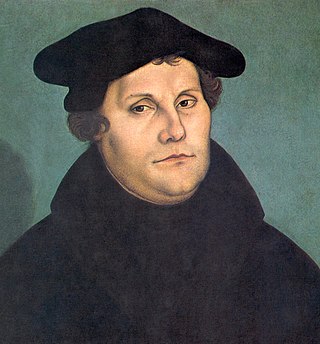
Gelobet seist du, Jesu Christ, BWV 91, is a church cantata by Johann Sebastian Bach. He wrote the Christmas cantata in Leipzig in 1724 for Christmas Day and first performed it on 25 December 1724. The chorale cantata is based on the hymn "Gelobet seist du, Jesu Christ" (1524) by Martin Luther.

"Gelobet seist du, Jesu Christ" is a Lutheran hymn, written by Martin Luther in 1524. It was first published in 1524 in the Eyn geystlich Gesangk Buchleyn. For centuries the chorale has been the prominent hymn (Hauptlied) for Christmas Day in German speaking Lutheranism, but has also been used in different translations internationally. It has appeared in hymnals of various denominations including the Catholic Church.

Sehet, welch eine Liebe hat uns der Vater erzeiget, BWV 64, is a church cantata by Johann Sebastian Bach. He composed the Christmas cantata in Leipzig in 1723 for the third day of Christmas, which is also the Feast of John the Evangelist, and first performed it on 27 December 1723.
There are 52 chorale cantatas by Johann Sebastian Bach surviving in at least one complete version. Around 40 of these were composed during his second year as Thomaskantor in Leipzig, which started after Trinity Sunday 4 June 1724, and form the backbone of his chorale cantata cycle. The eldest known cantata by Bach, an early version of Christ lag in Todes Banden, BWV 4, presumably written in 1707, was a chorale cantata. The last chorale cantata he wrote in his second year in Leipzig was Wie schön leuchtet der Morgenstern, BWV 1, first performed on Palm Sunday, 25 March 1725. In the ten years after that he wrote at least a dozen further chorale cantatas and other cantatas that were added to his chorale cantata cycle.

The Christmas Story (Weihnachtshistorie), SWV 435, is a musical setting of the Nativity in German by Heinrich Schütz, probably first performed in 1660 in Dresden. It was published as Historia der Geburt Jesu Christi.
Johann Sebastian Bach's chorale cantata cycle is the year-cycle of church cantatas he started composing in Leipzig from the first Sunday after Trinity in 1724. It followed the cantata cycle he had composed from his appointment as Thomaskantor after Trinity in 1723.
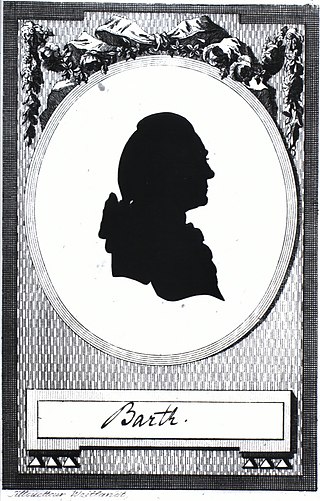
Christian Samuel Barth was a German oboist and composer of the classical period.

The Violin Sonata No. 2 in D minor, Op. 121, by Robert Schumann was completed in November 1851, Dedicated to the violinist Ferdinand David, the sonata received its first public performance from Clara Schumann and Joseph Joachim on 29 October 1853 in Düsseldorf, in a concert that marked the beginning of a long term musical collaboration.
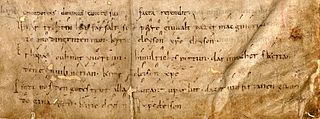
The Leise or Leis is a genre of vernacular medieval church song. They appear to have originated in the German-speaking regions, but are also found in Scandinavia, and are a precursor of Protestant church music.

Kirchenlied is a German Catholic hymnal published in 1938. It was a collection of 140 old and new songs, including hymns by Protestant authors. It was the seed for a common Catholic hymnal which was realised decades later, in the Gotteslob (1975).
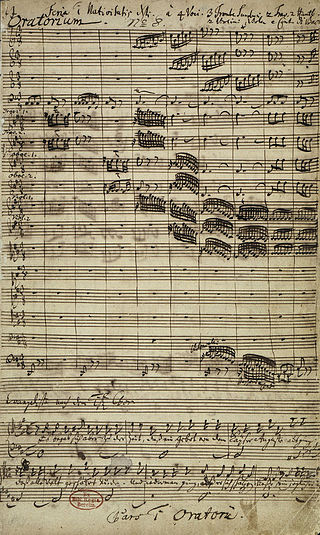
Jauchzet, frohlocket! Auf, preiset die Tage, BWV 248I, is a 1734 Christmas cantata by Johann Sebastian Bach that serves as the first part of his Christmas Oratorio. Bach was then Thomaskantor, responsible for church music at four churches in Leipzig, a position he had assumed in 1723. For the oratorio, the libretto by an unknown author followed the nativity of Jesus from the Gospel of Luke, interspersed with reflecting texts for recitatives and arias, and stanzas from Lutheran hymns.
Kündlich groß ist das gottselige Geheimnis is a Christmas cantata by Gottfried Heinrich Stölzel, intended for the third day of Christmas, and set for soloists, choir, oboe, strings and continuo.
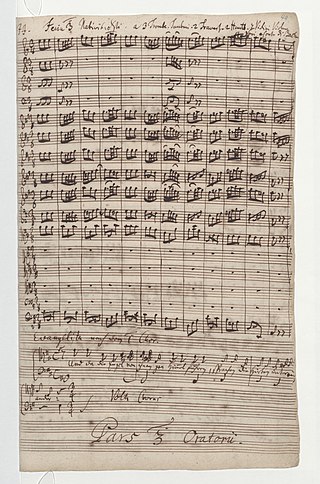
Herrscher des Himmels, erhöre das Lallen, BWV 248III, is a 1734 church cantata for the third day of Christmas (27 December) which Johann Sebastian Bach composed as the third part of his Christmas Oratorio. The Christmas cantata was first performed in 1734, in Leipzig. Bach was then Thomaskantor, responsible for music at four churches in Leipzig, a position he had assumed in 1723.

"Gelobt seist du, Herr Jesu Christ" is a Catholic hymn, addressing Jesus as the King. The five stanzas, composed in 1886, was written by the German Jesuit and hymnologist Guido Maria Dreves, and the melody was composed in 1928, three years after the introduction of the Feast of Christ the King, by the Austrian church musician Josef Venantius von Wöss.